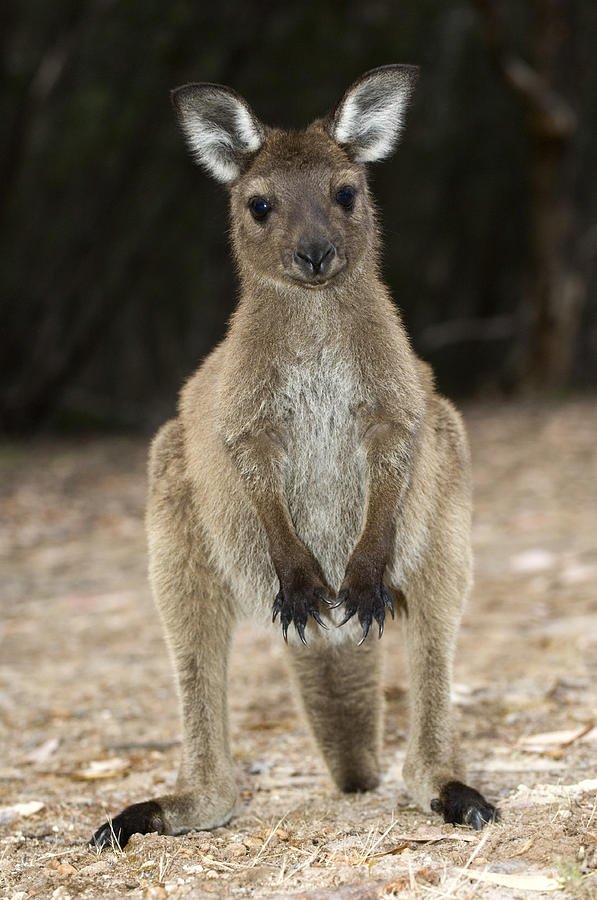
Imagine you’re in a serene park, and suddenly, a kangaroo bounds up. It’s a sight many people enjoy, but when faced with one up close, you can’t help but feel a twinge of uncertainty. Let’s explore what makes the Western Grey Kangaroo special, when they might turn aggressive, and how to stay safe if you ever find yourself sharing space with these fascinating marsupials.
Understanding the Western Grey Kangaroo
The Western Grey Kangaroo, scientifically known as *Macropus fuliginosus*, is a sight to behold. They typically inhabit shrublands, grasslands, and open woodlands across southern and western Australia. These kangaroos are known for their grey fur, long tails, and muscular bodies. They can grow up to 1.5 meters in length and weigh around 54 kilograms. They’re not just cute; they’re incredibly strong, thanks to those powerful hind legs—perfect for hopping great distances and escaping predators.
You might be wondering about their behavior. Generally, Western Grey Kangaroos are social animals that tend to live in groups called “mobs.” These mobs are often led by a dominant male, which keeps the peace among the females and young kangaroos. While they’re typically peaceful, there are situations when their behavior can change, and that’s where things can get tricky.
When Do Western Grey Kangaroos Become Aggressive?
While most encounters with Western Grey Kangaroos are harmless, certain situations can trigger aggressive behavior. For instance, when they feel threatened or cornered, these marsupials may react defensively. This can happen if someone gets too close to a mother and her joey, or if they’re startled by loud noises. When faced with a perceived threat, a kangaroo might stand up on its hind legs, thump its front paws, and even kick out, which can be dangerous.
In urban areas, where interactions between humans and kangaroos are more common, caution is especially important. Feeding kangaroos, for example, can lead to aggressive behavior as they may associate people with food. Remember, just because they’re cute doesn’t mean they won’t defend themselves if they feel threatened.
Signs of Aggression in Western Grey Kangaroos
Knowing how to read the body language of a Western Grey Kangaroo can significantly help in avoiding trouble. Here are some key signs of aggression to watch for:
- Standing Tall: If a kangaroo stands up on its hind legs, it’s often a sign of readiness to defend itself.
- Thumping: A kangaroo may thump its front feet on the ground as a warning. This action is like a shout saying, “Stay back!”
- Direct Stare: If it fixates on you with a direct stare, it could be assessing whether you are a threat or not.
- Raised Fur: Just like some pets, a kangaroo might fluff up its fur to appear bigger when feeling threatened.
If you notice these behaviors, it’s best to back off slowly and give them space. Remember, respect during encounters is key.
How to Stay Safe Around Western Grey Kangaroos
If you ever find yourself in an area where Western Grey Kangaroos roam, keeping safety in mind is essential. Here are some tips to ensure a pleasant encounter:
- Keep Your Distance: Admire kangaroos from afar. Use binoculars for a closer look without invading their space.
- Avoid Feeding: Never feed kangaroos. This can lead to aggressive behavior, as they may come to expect food from humans.
- Stay Calm: If you encounter a kangaroo, try to remain calm and back away slowly. Sudden movements might startle them.
- Respect Signs: Pay attention to local signs. If an area warns of kangaroo activity, it’s best to heed the advice.
Staying informed and cautious can help you enjoy the beauty of these creatures without putting yourself at risk.
Are Western Grey Kangaroos Dangerous to Pets?
If you have a pet and live near kangaroo habitats, you might be concerned about their safety too. Western Grey Kangaroos can indeed pose a threat to pets, especially dogs. If a dog gets too close or starts barking, the kangaroo may see it as a threat, leading to an aggressive response.
It’s wise to keep your dog leashed when walking in areas known for kangaroo populations. If a kangaroo feels backed into a corner or threatened, it can kick and cause serious injury to a pet. It’s all about establishing boundaries and respecting the kangaroo’s space.
In conclusion, while Western Grey Kangaroos can be fascinating and relatively harmless creatures, it’s essential to recognize that they can also be dangerous under certain circumstances. Understanding their behavior and knowing how to act around them—whether in the wild or in urban settings—can make all the difference.
So, next time you see one hopping along, remember to respect their space and let them enjoy their day unbothered. With a little awareness, you can safely appreciate the beauty of these amazing animals without risking an unexpected encounter. Stay safe, and enjoy the wonders of nature!

